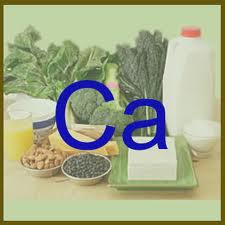CLICK HERE FOR ARTICLE
This article discuss a defectives in calcium channels clustering in axon terminals that disturbs excitability in motoneurons resulting in spinal muscular atrophy. The article defines Proximal spinal muscular atrophy (SMA) is a motoneuron disease for which there is currently no effective treatment. SMA is essential the death of motor neurons. This disease is more common in children. This disease is process and will result in immobilization of individual who have it. The article discuss two specific genes that are associated with this disease, they are SMN1 and SMN2.
The SMN1 gene is responsible to determine the length of a protein. The SMN2 gene code for a truncated protein lacking the functionally important domains at the C terminus that are encoded by exon 7(defined by the article). SMA is caused due to lack of SMN1, causing the lack of axon elongation. In the study they noticed that mice lose most of their motoneuron abilities during the critical development period. This means that when some is born they have full motoneuron capabilities. Within the time period after birth were these motoneuron issues begin was a major focus of this experiment. They article concluded that these motoneuron problems in SMA patients are a result of differentiation of motor endplates.
This article also focus its experiment on Cyclic adenosine monophosphate (cAMP). cAMP is defined as a cyclic nucleotide, adenosine 3′,5′-cyclic monophosphate, that serves as an intracellular, and sometimes extracellular, “second messenger” mediating the action of many peptide or amine hormones. Basically means that they help to get certain hormones inside the cell; hormones like epinephrine, which that otherwise could not do the intended response or reaction. Its main purpose is of cAMP is to activate of protein kinases. Protein kinase can then modify other proteins by adding phosphate group to them commonly known as phosphorylation. The article concluded that 8-CPT cAMP enhances spontaneous Ca2+ influx into spinal motoneuronsm. Which means that this specific 8-CPT cAMP might be a possible treatment for SMA patients.
Overall, I found this article to be extremely interesting and really content rich. I think this study might give individuals suffering from SMA some hope for future research that might lead to a possible treatment. Also I was surprised that calcium plays such a huge role in disease like SMA. I definitely recommend this article
Introduction to my blog
The purpose of this blog is to show the world the importance of calcium. In my blog I will focus my attention around the role that calcium plays in bone and muscle metabolism. Through this interactive classroom you can click on articles that I have selected that show experiments and statistics surrounding calcium based studies, along with current news links to help you stay updated on what’s new. Check it out and learn about calcium :)
Saturday, November 13, 2010
Seeing is believing! Imaging Ca2+-signalling events in living cells.
A.) activation of Ca2+-activated K+ channels by Ca2+ sparks results in spontaneous transient outward currents (STOCs), hyperpolarizing the plasma membrane (increased membrane potential; Vm). This reduces activation of voltage-operated Ca2+ channels (VOCCs), decreasing Ca2+ influx and global [Ca2+]. This can act as a negative feedback mechanism, whereby localized Ca2+ release from the sarcoplasmic reticulum (SR) lowers mean cytosolic [Ca2+], restricting further store loading.
B.) spark-dependent activation of Ca2+-activated Cl− channels causes spontaneous transient inward currents (STICs), with membrane depolarization and Ca2+ channel activation. This results in positive feedback, with Ca2+ release from the SR promoting further Ca2+ influx.
Above is an image directly from the article.
The article discusses a study that take a closer look at what is happening with calcium on a cellular level. Some of this study is conducted on jellyfish. They used jellyfish because they were able to stain its protein with a fluorescent dye. The purpose of staining the proteins is to use them as bio-markers for a better understand of where the calcium is going and why. In their research was done because they know that muscle contractions require the presence of calcium. With the knowledge that calcium is required they then realized that calcium play a vital role in excitation of contraction coupling.Excitation of contraction coupling is defined to describe the physiological process of converting an electrical stimulus to a mechanical response.This coupling is vital to muscle physiology.This article also calcium sparks which is depicted and explained above. Basically these Calcium sparks act as the building blocks for larger transients during the contraction of cardiac muscle (at least in this study). These calcium sparks result in both inhibitory and excitatory responses. They do this by increasing and decrease calcium sensitivity. The calcium sparks are also responsible for both positive and negative feedback. Overall, this article was pretty difficult to navigate through, but it is definitely full of great proven research. The article conclude that they would like to conduct another experiment were they could take a closer look at the use of genetically coded calcium indicators expressed in organelle and/or tissue in identify specific purposes.
CLICK HERE FOR ARTICLE
Subscribe to:
Posts (Atom)

